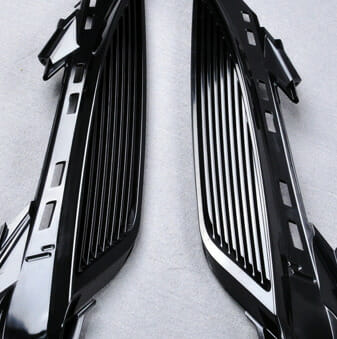Injection molding is a typical additive manufacturing technique involving injecting molten materials into an aluminum or steel mold, where it solidifies into the desired shape. It is a highly innovative process suitable for fabricating parts for different applications, including creating medical equipment and devices.
The process is suitable for fabricating both metal and non-metallic components. However, it is often used in creating parts made of plastic polymers, especially the CNC aluminum mold making, because it is more cost effective and provides better heat dissipation. This article discusses intricate details you need to know about using aluminum molds in the medical industry.
The Process of Aluminum Molding Medical Devices
Aluminum molds are fabricated by sand casting. As the name suggests, the process involves creating structures using a mixture of sand and metal in a cavity under high temperatures. In this case, the metal is an alloy of aluminum – mainly 7050 aluminum – which is heated into a molten state before it is poured into the sand mold. As the aluminum and sand mixture cools off and solidifies, the sand mold is broken, giving rise to the shaped aluminum mold, ready for injection molding operations.
The process of aluminum injection molding for manufacturing medical devices involves first melting suitable medical-grade plastic polymers at high temperatures. These liquid plastics are then passed into the aluminum molds for reshaping into the desired form. The process is straightforward and produces parts and components with consistent structures, high dimensional accuracy, and good surface finishes.
What Is the Common Type of Aluminum Used for Aluminum Mold?
Of all models of aluminum and its alloy, the 7050 aluminum is the most commonly used in fabricating molds for injection molding. It is also used in designing the mold for blow molding. This aluminum brand is the go-to option because of its high tensile strength, toughness, and resistance to stress, corrosion, and cracking.
Another common model of aluminum alloy used in fabricating injection molds is the 6061 aluminum. It also has comparable resistance to stress, cracking, and corrosion.
Benefits of Creating Medical Equipment With Aluminum Molds
Aluminum molds are suitable for various industries, including those that specialize in manufacturing medical gadgets. Here are some of the benefits of fabricating medical equipment with aluminum molds.
● Reduces Production Time
In injection molding, the production time is the duration it takes from injecting the plastic polymer till it is finally ejected to form the product. The time varies based on the type of material, temperature, pressure, and the kind of mold.
That said, manufacturing using aluminum molds significantly reduces production time, especially when compared to steel molds. Fabricating medical equipment im aluminum molds takes barely 40 to 70 seconds, hence, shorter lead times.
This is because aluminum molds are better at dispersing the required heat to melt the plastic polymers for fabrication. However, these molds may not be suitable when working with products that require extreme temperature and pressure.
Moreover, aluminum injection molds can fabricate components with complex shapes and geometries at high precision and accuracy. Therefore, there is less need for other post-processing operations, which further suggests that the process makes production times shorter.
● Enhanced Fabrication
Aluminum injection mold’s consistent and uniform heat dispersion ensures that there are little to no defects in the fabricated medical equipment. The products are often devoid of common thermal and additive manufacturing production flaws, such as marks, voids, scars, etc. Other injection molds may experience non-uniform heat dissipation, affecting the fabrication results.
● Easy to Repair and Modify
Unlike most other metals, aluminum is relatively soft and possesses excellent mechanical properties that make it easier to repair, which may help reduce maintenance costs. Also, the top-notch machining features of aluminum, among other characteristics, ensure easy modification of the molds when there’s a need to adjust it to suit specific fabrication.
Design Tips for Fabricating Medical Parts With Aluminum Injection Molds
Here are simple tips to help ensure you make the best use of aluminum injection molds when fabricating medical components and devices.
● Ensure Consistent Wall Thickness
The thin-walled sections cool and solidify before the thick areas when injection molding with aluminum molds. Since thinner parts will freeze faster than the thick sections, it may affect the fabrication. Therefore, when fabricating medical components with aluminum injection molds, ensure that the walls have a similar thickness for uniform and quick coiling of the parts during fabrication.

● Use the Right Materials
In any manufacturing process, using the right materials is essential, as it affects the whole production process and the results. In fabricating aluminum plastic injection molds, silicon is the go-to element used as alloys. Its excellent physical features, such as its greater ability to retain heat than aluminum, make it an excellent fit for fabricating aluminum molds.
However, there are other compatible alloys for making aluminum molds. They must have a short freezing range, which indicates enhancing the solid mechanical features in fabricated parts.
● Create Room for Design Modification
When designing aluminum mold, manufacturers should make allowance for future design adjustments. Ensure the design contains a simple procedure indicating how to modify the mold design. Adhering to this guideline may prove cost-ineffective. However, should the need arise where the aluminum mold needs corrections, in hindsight, the allowance for design modification will appear like a genius plan.
Conclusion
Aluminum injection molding is a common manufacturing process for creating many gadgets and equipment used in hospitals, clinics, and other aspects of medicine. It is suitable for fabricating simple medical equipment like Petri dishes, test tubes, syringes, catheters, connectors, etc.
Also, the method can fabricate components of more sophisticated machines like joint replacements and prosthetics, X-ray equipment, and housing and casings of MRI and ECG machines. The aluminum injection molding process fabricates parts with high precision, accuracy, and tight tolerance specifications at high speed, and this makes it a valuable production technique for the medical industry.








